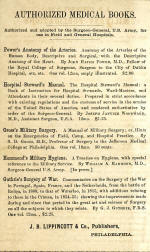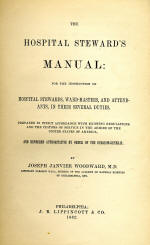Civil War
Military Surgical Manuals and Medical
Textbooks
Civil War
Medical Books, Civil War Medicine
A
Collection of Medical text-books based on the
Surgeon General's Office Library
Catalogue in
1840, 1864, and
1865
Topics: Medical textbooks, Civil War medical
books, antique medical books, and rare medical books which were used during the
Civil War by surgeons both in the Union and Confederate Armies.
U. S. Army &
Confederate Army Medical Department Publications
U.S. Army Hospital and Medical Departments
Page One
Pages:
1
|
1a
|
2
|
2a
|
3
|
3a
|
4
|
4a
|
5
|
5a |
6
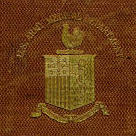

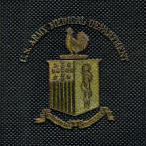
See more
Medical and Hospital Dept. logos
During the Civil War, it
was essential surgical manuals were published because most physicians who
enlisted or volunteered during the war had little or no surgical experience.
Medical colleges typically offered two year courses to grant a medical degree and the
medical
textbooks they used are represented in this collection.
The medical textbooks were produced for or used by both contract and military
surgeons during
the Civil War. In the latter pages of this collection are medical and
surgical textbooks which would have been used in medical college just prior to or during the Civil War.
Those designated by the Medical or Hospital Departments were government
issue for the U. S. Army.
 |
|
A doctor in his
office: library, stethoscope, skull, amputation set on top of the
cabinet |
The basis of this Civil
War
medical book collection is the presence of these medical textbooks in the Surgeon
General's Office Library Catalogue as published in
1840, 1864, and
1865.
See a
list of all catalogues with
publications and dates.
The edition and year of publication is representative of those listed in the printed
Catalogue in 1864 and 1865. These
books were chosen by the surgeons who ran the Union Army medical services prior
to and during the Civil War. The Confederate Army staff surgeons used
many of the same textbooks as the majority of the CSA executive surgeons were in the Union
Army prior to the War and most were educated at northern medical colleges.
The collection is currently being limited to 1860 to 1865 edition dates for
additiions.
Civil War Surgeon General's library and
publications ordered by the U.S. Army Medical Department
during the Civil War
The assembly of this collection is also
cross-referenced to the
Arnold G. Diethelm collection at the Reynolds Historical Library collection
of Civil War Medicine, but the Reynolds collection is not based on the
Surgeon General's Office Library. Until recently very few collectors
were aware of the SGO Library Catalogue due to the rarity of the printed
catalogues.
Authors of some of the surgery manuals: Smith, Hamilton, Blackman, and Tripler, are
some of the surgeons who
were assigned the responsibility of selecting the instruments to be placed in
Civil War surgical sets at the inception of the War. These sets were
then made
by contractors like George Tiemann Co., Kolbe', Hernstein, Kern, and others.
It's all inter-connected.
The manuals and textbooks on these pages are not reproductions, they are
originals and may have been
used prior to or during the Civil War by the medical staff surgeons on
either side. Some of these books are not visually pretty due to their
age and use by the doctors who owned the books. They were actively
used to learn and in some cases carried to war. They are intended to
represent a 'working' condition collection. In many cases the texts
are signed by their doctor owners.
 |
|
The
Surgeon Generals' Library c. 1861 |
In some cases, these
textbooks were issued to surgeons in the Army of the United States by the
U.S. Army Surgeon General, Clement Alexander Finley, before the beginning of the
Civil War. The National Library of Medicine states in an
article by Wyndam
Miles, how many of various medical text books were
published specifically for the Medical Department during the early years of the War, and that information is shown
via the Wyndam Miles article.
Subsequent
published Catalogues of the Surgeon General's Office Library list the books
in that library in 1840,
1864, and
1865. See a
list of all catalogues.
To the left, is a period image
of the Surgeon-General's Office Library in 1861. See information on the
Surgeon General's
Office Library by
Wyndam Miles.
Information on the Surgeon
General's Office Library by
Wyndam Miles
Article on
early American Medical Libraries.
Ciba
article on Civil War medical education
Ciba article
on Civil War medicine during the Civil War
U. S. Army Surgical Manuals and
Medical Books
The Civil War Era Medical Text-book Collection
Page 1
Authors:
S. Smith, W.
Grace, Gray, J. Janvier
Woodward, Medical Regulations U.S. Army, Revised U.S. Army Regulation, Wells, Strait
Click on images to enlarge
The Army Surgeon's Manual,
for the use of Medical Officers, Cadets, Chaplains, and Hospital Stewards,
(1861 to 1864, published 1864), by William Grace with permission of the
Surgeon-General
The only complete source
for the rules and regulations of the U. S. Army
Medical Department, Grace’s Manual contains all
general orders from the war department, and
circulars from the surgeon-general’s office from
January 1, 1868 to July 1, 1864. It lists the
medical staff of the U. S. Army as of July 1,
1864.
A copy of this text book is
listed in the 1865 Surgeon
General's Office Library Catalogue or the
list of medical textbooks which were
published during the Civil War by the Army Medical Department. This rare text contains all regulations from
January 1861 to July 1, 1864. 200 pages.


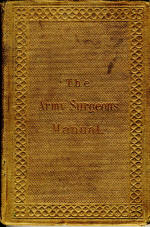
List of U. S. Army Medical
Department Surgeon's in 1864
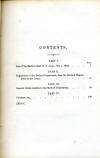
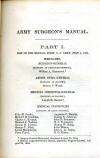
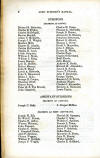
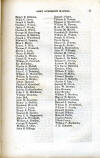
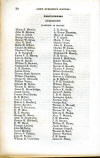
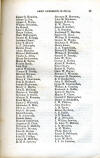
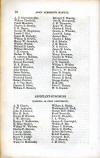
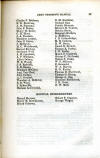
Below: Recent publications for
surgeon's,1864 by Bailliere Bros., N.Y.
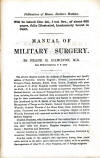
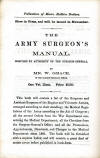
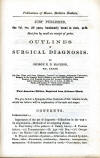
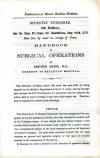
Hand-book of surgical operations,
(1863) by Stephen Smith, M.D.
A copy of this text book is listed in
the Surgeon General's Office Library
Catalogues and the list of medical textbooks which were published during
the Civil War by the Army Medical Department or the
list of medical textbooks which were
published during the Civil War by the Army Medical Department.
See an
1865 receipt for purchase of this book by a Civil War assistant surgeon.
A
Hand-book of
Surgical Operations has been prepared at the suggestion of
several professional friends, who early entered the medical staff of the
Volunteer Army. It was alleged that the military surgeon of this country
had no small and convenient work suitable for a pocket companion,
containing the details of the more common as well as the important
operations in surgery. He must either
encumber himself with the large treatises on general .and operative
surgery, or rely upon his unaided memory in the emergencies of the
service.
In its scope the work is limited to those
branches of operative surgery which are of the most importance to
the military surgeon. This was deemed advisable, in order to render
the volume as convenient and portable as possible. Within these
limits the constant effort has been to embrace the greatest number
of subjects, to arrange them in the best form for reference, and to
give the largest amount of practical details, anatomical and
operative.
As the value of such a work is much enhanced
by engravings, care has been taken to illustrate every subject to
the fullest extent. For this purpose works ou operative surgery have
been largely consulted, and such illustrations selected as were
deemed most valuable. To avoid frequent repetitions, no mention is
made in the text of the source from which they have been derived,
and this occasion is taken to make proper acknowledgment. In the
chapter on Minor Surgery, the illustrations are copied from English
surgical treatises, Sedillot's
TraitS de Med. Operat., and Jamain's Manuel de Petit Chir,;
the illustrations of the Operations
on Arteries are from Sedillot {op.
tit.) and Guerin's Elem. de Chir.
Operat.; in the chapter on Amputations, the illustrations are
from English works, viz. Skey, Fergusson, Listen, Guthrie, and
Druitt, and from Guerin (op. cit.), Chassaign»-'s Traite
Clinique et Pratique des Operations
Chirurgicales, Spc., and Bernard and Huette's Illustrated
Manual of Operative Surgery and
Surgical Anatomy ; in the chapter on Resections,
the illustrations of operations are
from Chassaignac (op. cit.), Guthrie, Heyfelder's
Operationslehre und Statistic der Resectionen, Erichsen, and
Bernard and Huette (op. cit.). The illustrations of
instruments through the volume have been selected by Tiemann & Co.,
and Wade & Ford, Instrument Makers, of this city, and
generally represent the latest improvements.
Although this work is limited, as stated
above, yet the subjects treated are, with the exception of Gunshot
Wounds, such as constantly engage the attention of the surgeon in
civii and hospital practice, and it is believed that it will prove
to this class of practitioners a useful and acceptable aid to the
memory. To the students of Operative Surgery, it presents in
sufficient detail for the purposes of study and practice, the
methods of performing the ordinary
operations in Surgery.
May 16,1862.
Additional information on:
Stephen Smith, M.D.
|
Bellevue Hospital Medical College
lecture card for Stephen Smith, M.D.1870-71 |
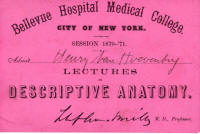 |
|
Title: Hand-Book of Surgical Operations
Author: Stephen Smith, M.D.
Published: Bailliere Bros., N. Y. (1863) Hard bound, 6 7/8 x 4 3/4 x 7/8 in., 261 pages
Multiple drawings

Signed: Dr. James
E. Copeland,
Round Hill, Loudoun Co, Virginia
He joined the Confederacy late in
the war as a private, in the 35th Virginia Cavalry Battalion
and was paroled in Winchester, VA, on May 8, 1865 after his
surrender. James E. Copeland received his M.D. degree from
Washington University School of Medicine, Baltimore, MD in 1876.
|
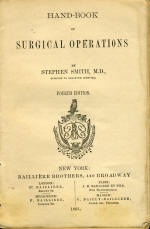 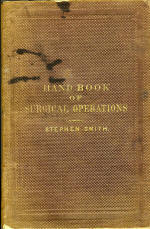 |
Surgical drawings from Smith's manual of surgery
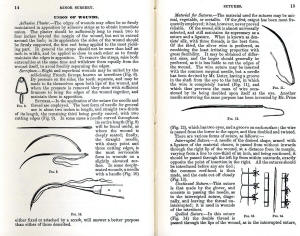

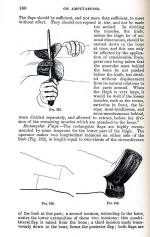
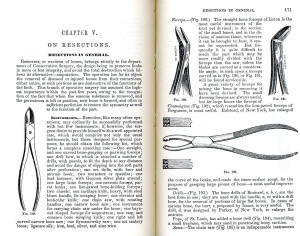
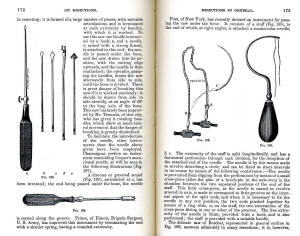


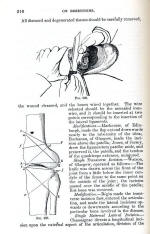
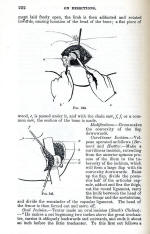
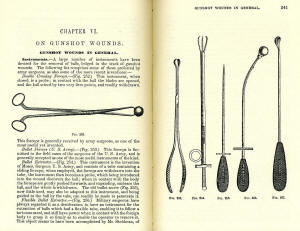
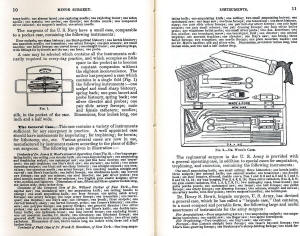
Gray's
Anatomy, Descriptive and Surgical, by Henry Gray, (1862, second edition)
U. S. Army Hospital
Department Issue
Gray, Henry, F.R.S,
Lecturer on Anatomy at St George's Hospital London.
ANATOMY DESCRIPTIVE AND SURGICAL, The Drawings by H. V. Carter
MD, Demonstrator on Anatomy at St. George's Hospital the
dissections jointly by the Author and Dr Carter Second American from
the second revised and improved London edition in one magnificent
imperial octavo volume of over 800 pages with 388 images and
elaborate engravings on wood. 1862
|
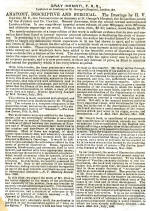 |
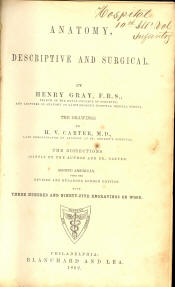   |
|
Discussion of this text by the publisher
Blanchard and Lea, 1863
|

Marked: U. S.
A. Hospital Department
|
_small.jpg)
The book is marked:
'U. S.
A. Hospital Department' on the spine. This copy is also pen
marked: "Hospital 10th Ill (Illinois) Vol (Voluntary) Infantry
on the title page.
The 10th Illinois Volunteer Infantry
was the only regiment from the state of Illinois to be mustered
into service while in the field, under orders. They were sworn
into service in Cairo, Illinois on 29 April 1861 for three
months.
In July 1861, the regiment enlisted for
three years. In January 1862, they moved with Grant's forces
toward Paducah, KY. The unit intercepted the rebels in their
retreat from Island #10, which led to the surrender of almost
6,000 Confederate troops at Tiptonville, TN.
In 1864, the 10th Illinois reenlisted
as a Veteran regiment and participated in Sherman's March to the
Sea as well as the Battle of Bentonville and other battles
toward the end of the war. The 10th Regiment mustered out of
service on 4 July 1865.
Hospital Steward's Manual, (1862) by
Joseph Janvier Woodward, M.D., Asst. Surgeon U.S.A.,
U. S. Army Hospital Department
Issue
Additional information on
Joseph J.
Woodward, M.D
The Hospital Steward's Manual,
for the instruction of hospital stewards, ward-masters, and
attendants, in their several duties.
A copy of this text book is
listed in the 1864 Surgeon
General's Office Library Catalogue or the
list of medical textbooks which were
published during the Civil War by the Army Medical Department.
At the beginning of the
Civil War Dr. Woodward entered the United States army as assistant surgeon,
serving with the 2d United States artillery in the Army of the Potomac, and
then became chief medical officer of the 5th division in the Department of
Northeast Virginia, being present at the first battle of Bull Run. Later he
became medical officer of three light batteries in General Philip Kearny's
division in the Army of the Potomac. In May, 1862, he was assigned to duty
in the surgeon-general's office in Washington, and charged with the duty of
collecting materials for a medical and surgical history of the war and for a
military medical museum. At the close of the war he received the brevets of
captain, major, and lieutenant-colonel, and on 28 July, 1866, he was
commissioned captain and assistant surgeon. He was made surgeon with the
rank of major on 26 June, 1876. Dr. Woodward was associated in the
management of President Garfield's case after he was shot,
HOSPITAL STEWARD'S MANUAL
THE HOSPITAL STEWARD'S MANUAL A Book of Instruction for Hospital Stewards,
Ward Masters, and Attendants in their several duties. Prepared in
strict accordance with existing regulations and the customs of service in
the armies of the United States of America, By JOSEPH JANVIER WOODWARD MD,
Assistant Surgeon USA 12mo
J.B. Lippincott & Co.,
Philadelphia, 1862. Hard Cover. First Edition. 12mo. Dark brown cloth with
gilt spine lettering. 324pp. B&W illustrations. Scarce 1st edition of this
important medical book.
|
AMA Data Base
Name: Benjamin Williams
Death date: Nov 27, 1910
Place of death: Prospect Harbor, Maine
Birth date: 1835
Type of practice: Allopath
Practice speciality: GS General Surgery
States and years of licenses:
Maine
Medical school(s): Bowdoin Medical School, Brunswick-Portland:
Medical School of Maine, 1864

Printed label in the
book
|
Signed in the front page and
dated 1863:
"B. Williams, A. H. S. 26th Me. Vols.
Port-Hudson, June 1863 (Army Hospital Steward, 26th Maine
Volunteers), later Benj. Williams was listed an Assistant-Surgeon in
the 8th Infantry, Maine. until August 31, 1864."

Signature of Ben. Williams
|
From Bowdoin Medical
College Biographies: Benjamin Williams, M.D. Born 1836
Thomaston. 26th Maine Volunteers 1862; Assistant Surgeon 8th
Maine Volunteers 1864-66. Physician in Freedon 1866-74;
Rockland 1874-1906. Mayor of Rockland 1886-87. Comdr. Maine
G.A.R. 1884. Retired to Prospect Harbor. Died 1910.
Steward and later, Assistant-Surgeon
B. Williams: The inside cover is written
on and signed by steward Ben. Williams while at the battle of Port Hudson,
La.. (See history of
26th Regiment
Maine, Vol. )
Above is a paper label with William's name printed and the page is also signed by: Ben. Williams, 2d, on
the backside of the front board with the Port Hudson information.
Benj. Williams is listed as a
H. Stew. (Hospital Steward) from Rockland, Me, in the Roster of
Surgeons on page 141 under the 26th Regiment Maine, they mustered
out in August 17, 1863.
Benj. Williams, Rockland, Me,
is later listed as an Assistant-Surgeon on page 138 of the Roster of
Surgeons from August,1864. Apparently Benjamin was promoted to
an assistant surgeon between 1863 and 64.
Regulations for the Medical Department of the Army of the United
States, War Department, Adj. General's Office, Washington, D.C. 1861
This small
booklet (5 x 8 in.) approximately 60 pages, contains extracts from
the General Regulations of the Medical Department of the Army which
were published by order of Sec. of War, L. Thomas, Adj. Gen.
The book is more of a pamphlet, being bound with hard paper boards and
the spine hinged with typical period black cloth and sewn pages.
It was published for issue to the Army Medical Officers and Stewards.
REVISED ARMY REGULATIONS
REVISED REGULATIONS FOR THE ARMY OF THE UNITED STATES, 1861. By
authority of the President of the United States and the Secretary of War
With a full Index. One vol 8vo $1.75
Of
considerable importance to this collection is the subject of 'contract' physicians and
the Form 18, which the Army was required to fill out when hiring a
physician for the Army. The significance of this form today is
it proves a given
doctor served during the War as a contract physician. The full
text
is provided below, but not the charts and tables in the balance of the book.
It spells out the duties and expectations for Union medical officers.

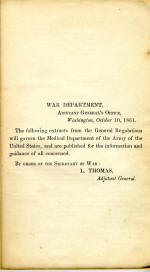

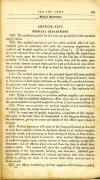
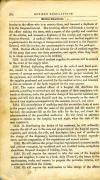
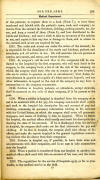

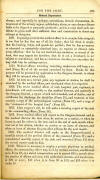
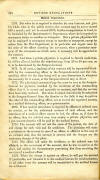
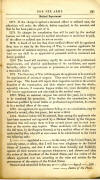

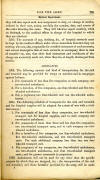
|
Form 18
Used
by the U. S. Army to subscribe contract surgeons during
the Civil War. This type of form would be hard evidence a
doctor served as a physician during the War |
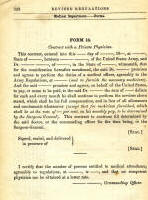 |
Roster of Civil War
Surgeons and Assistant Surgeons,
(1883) by J.W. Wells and N.A. Strait
Note: Regarding signatures of doctors in
the front of medical and surgical texts. Just because a given doctor cannot be
found in the Roster of Surgeon's does not mean they did not serve in the Civil
War. Only regular Army Surgeons or Assistant Surgeons are listed in the
Roster. The Roster list does not include any Confederate Surgeons, nor does it
included any of the thousands of contract or volunteer militia surgeons who served
in rear area hospitals or temporarily. Tracking down
who was and was not a 'surgeon' during the War is a major undertaking and
requires hours of detailed work, luck, and persistence.
Among the contract surgeons, there
were both homeopathic and allopathic physicians and their training varied
greatly. The Union Army went to great lengths to weed out those '
wannabe surgeons'
who may not have been adequately trained, but that information is difficult
to find or verify. See
report on Gettysburg by Surg. Letterman about 'useless' civilian
doctors
Additional information on this Roster and it's history.
|
By J.W.
Wells and N.A. Strait
The original
alphabetical list of the Battles of the War of the Rebellion
with dates and a Roster of all the Regimental Surgeons and
Assistant Surgeons in the hospital service of the Union Army
during the Civil War including Surgeons and Assistant Surgeons
assigned to the U.S. Colored Troops. The soft-cover book is 331
pages in length and measures 5 3/4" x 9". It was compiled after
the War by J.W. Wells and N.A. Strait and published in
Washington, D.C. in 1883. It is the definitive resource
for identification of staff doctors who were in the Union Army. It does
not list contract doctors, who may have served part-time or
Confederate medical personnel.
|
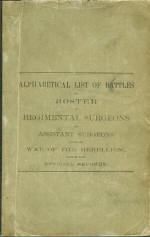
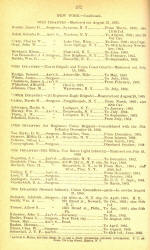
View the full text on Google
'Books' for research purposes |
Revised
Regulations for the Army of the United States, (1861)
Rare original fully indexed copy of
the 1861 Army Regulations, including the Medical Department, by authority of
the War Department, published by J. G. L. Brown, Philadelphia.
Book is 559 pages. Foreword by Simon Cameron, Secretary of War,
August 10,1861.
| Signature is that of George Barton
(Inscribed in front and back of book) who was a 2nd.Lieut in the
81st. Pennsylvania Infantry. Barton was severely wounded in
December of 1862 at Fredericksburg, Va., resulting in the
Amputation of his right leg. He was discharged in April of 1863
for the wounds he received.
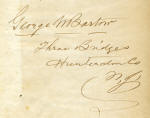
|
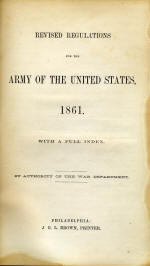

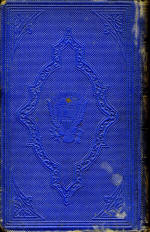
|
|

Listing of Lt. Barton in the
Medical & Surgical History |
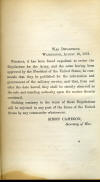
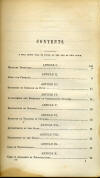
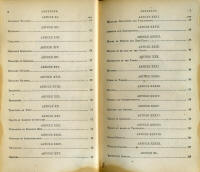
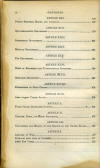
Table of contents of the Regulations
Medical Book Collection
Pages:
1
|
1a
|
2
|
2a
|
3
|
3a
|
4
|
4a
|
5
|
5a |
6
See information on
Medical education and lecture cards
during and before the Civil War
|
Wanted: Medical textbooks
marked for the U.S.A. Medical or Hospital Dept. |
|







































_small.jpg)
